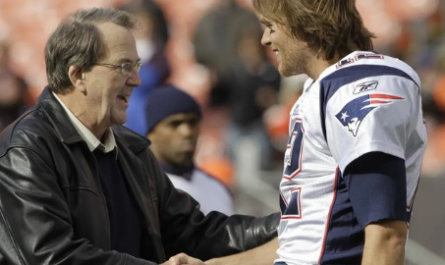# Exploring the Themes and Musical Style of Prince’s 2001 Album “The Rainbow Children”
## Introduction
Prince, the legendary artist known for his eclectic and innovative musical style, released “The Rainbow Children” in 2001. This album marked a significant departure from his earlier work, both thematically and musically. “The Rainbow Children” is often seen as one of Prince’s most controversial and ambitious projects, blending various genres and exploring deep, sometimes contentious, themes. This exploration will delve into the key themes and musical styles that define this unique album.
## Themes
### 1. Spirituality and Religion
“The Rainbow Children” is deeply rooted in Prince’s spirituality, reflecting his conversion to Jehovah’s Witnesses. The album’s narrative revolves around a concept of spiritual awakening and enlightenment, portraying a journey toward divine understanding and truth. Songs like “The Work Pt. 1” and “The Everlasting Now” emphasize the importance of spiritual labor and living a righteous life according to religious principles.
Prince’s conversion to Jehovah’s Witnesses significantly influenced the album’s direction, imbuing it with a sense of religious fervor and devotion. The lyrics often draw from biblical references and spiritual teachings, encouraging listeners to seek a higher purpose and align themselves with divine will. This theme is not just a backdrop but the core of the album’s message, urging a transformative journey towards spiritual enlightenment.
### 2. Race and Identity
Prince uses “The Rainbow Children” to address complex issues of race and identity. The album’s title itself suggests a vision of unity and diversity, representing a world where people of different backgrounds come together. Tracks such as “Family Name” confront the history and impact of slavery, as well as the erasure of African heritage and identity. Prince’s narrative seeks to reclaim and celebrate African American culture and history.
The album’s exploration of race and identity is both a personal and a broader societal commentary. By delving into the African American experience, Prince highlights the struggles and resilience of his community. He challenges the listener to reflect on historical injustices and the ongoing quest for identity and empowerment. This theme adds a layer of depth and urgency to the album, making it a poignant statement on racial dynamics.
### 3. Love and Relationships
Interwoven with spiritual and racial themes are explorations of love and relationships. However, these themes are approached from a spiritual perspective, emphasizing the sanctity and divine nature of love. In “Muse 2 the Pharaoh,” Prince sings about finding a soulmate who shares his spiritual journey, highlighting the importance of unity and shared values in a relationship.
Prince’s portrayal of love in “The Rainbow Children” transcends the typical romantic narrative, presenting it as a divine connection that fosters spiritual growth. This perspective elevates the concept of love, viewing it as a sacred bond that aligns with the pursuit of spiritual truth. The lyrics often reflect a deep, almost reverential, appreciation for the transformative power of love.
### 4. Societal Critique and Utopia
Prince critiques societal structures and envisions a utopian world in “The Rainbow Children.” Songs like “1+1+1 Is 3” suggest a new social order based on spiritual enlightenment and unity. Prince imagines a society free from corruption, materialism, and division, advocating for a return to spiritual values and communal living.
This vision of a utopian society is central to the album’s narrative, offering a hopeful and idealistic counterpoint to the critiques of contemporary social issues. Prince’s utopia is one where spiritual enlightenment leads to harmony and collective well-being. The album’s narrative structure allows for a detailed exploration of this ideal, providing a blueprint for a spiritually guided society.
## Musical Style
### 1. Jazz Influences
One of the most notable aspects of “The Rainbow Children” is its strong jazz influence. Prince incorporates elements of jazz fusion, with complex arrangements, extended instrumental solos, and improvisational passages. The use of horns, particularly in tracks like “The Sensual Everafter,” adds a rich, layered texture to the music, reminiscent of jazz greats.
The jazz elements in the album are not just stylistic choices but integral to its overall feel and atmosphere. Prince’s ability to seamlessly blend jazz with other genres showcases his versatility and deep understanding of musical intricacies. The improvisational nature of jazz allows for a fluid and dynamic listening experience, keeping the audience engaged and intrigued.
### 2. Funk and Soul
Despite its jazz undertones, “The Rainbow Children” is firmly rooted in Prince’s signature funk and soul sound. Tracks like “The Work Pt. 1” are driven by infectious grooves, funky bass lines, and soulful melodies. Prince’s ability to blend these genres creates a dynamic and engaging listening experience, showcasing his versatility as a musician.
The funk and soul elements provide the album with a rhythmic backbone, grounding its more experimental aspects in familiar territory. This fusion of styles ensures that the album remains accessible while pushing musical boundaries. The grooves and rhythms are quintessentially Prince, reflecting his unparalleled talent in these genres.
### 3. Experimental and Progressive Rock
Prince pushes the boundaries of conventional music with experimental and progressive rock elements. The album features complex song structures, unconventional time signatures, and a diverse range of instruments. The title track, “The Rainbow Children,” exemplifies this approach, with its shifting tempos and intricate instrumental sections.
The progressive rock influences add a layer of complexity and sophistication to the album. Prince’s willingness to experiment with different musical forms and structures results in a unique and unpredictable sound. This experimentation is a testament to Prince’s innovative spirit and his commitment to artistic exploration.
### 4. Narrative and Conceptual Approach
“The Rainbow Children” is a concept album, with a cohesive narrative that ties the songs together. Prince uses spoken word interludes and recurring musical motifs to create a sense of continuity throughout the album. This narrative approach allows Prince to explore his themes in depth, creating a rich and immersive listening experience.
The concept album format enables Prince to weave a detailed and multifaceted story, enhancing the thematic content with a strong narrative thread. The spoken word interludes, in particular, provide context and deepen the listener’s understanding of the album’s message. This approach makes “The Rainbow Children” not just an album but a cohesive and compelling artistic statement.
## Conclusion
“The Rainbow Children” stands out in Prince’s discography as a bold and innovative project. Its exploration of spirituality, race, love, and societal critique, combined with its diverse musical influences, makes it a unique and thought-provoking album. Prince’s willingness to push boundaries and challenge conventions is evident in every track, solidifying “The Rainbow Children” as a testament to his artistic vision and creativity. This album invites listeners to embark on a journey of spiritual and musical discovery, reflecting the multifaceted genius of Prince.
Through its intricate themes and rich musical tapestry, “The Rainbow Children” offers a profound listening experience that continues to resonate with audiences. Prince’s exploration of deep and sometimes controversial subjects, coupled with his unparalleled musical prowess, ensures that this album remains a significant and influential work in his illustrious career. As listeners delve into “The Rainbow Children,” they are invited to reflect on their own spiritual journeys, societal views, and personal connections, making this album a timeless and transformative piece of art.



